National seminars
Proceedings of the Workshop on Reducing Drudgery of Women in Processing Small Millets
Background
Small millets in the Indian context include finger millet, kodo millet, little millet, foxtail millet, proso millet, barnyard millet and browntop millet. They have been cultivated in India for around 3000 years, making them an integral part of the culture and history of India. Small millets offer better nutrition with more micronutrients (like vitamin B complex, calcium, iron and sulphur), more protein, more dietary fibre and low glycemic index when compared to mainstream cereals like rice and wheat. They are known as both preventive and curative foods. They help to manage lifestyle diseases like obesity, diabetes, hypertension, cardiovascular diseases and anaemia. They are also a safe source of food, as no or meagre farm chemicals are used for their cultivation. However, cultivation and consumption of small millets has come down in the last three decades. While the area under cultivation of finger millet (a naked grain that does not need hulling) declined by 56.4%, other small millets with husk declined by 82.5% between 1965-66 and 2011-12 (Government of India 2014). Drudgery of women in primary processing of small millets with husk was a major reason for decline in consumption of these crops in the production regions across India. Women in the small millet farming household in general spend about three hours to process 5-8 kg of grains of these small millet crops. This process involves considerable drudgery and physical efforts. Appropriate mechanisation is the way to address this problem. Understanding the scope of small millets to address triple burden of malnutrition and non-communicable diseases, many agencies are taking efforts to develop appropriate processing equipment for small millets in the recent past. The sharing between the agencies involved in developing these technologies and between the developers and the users and promoters has been limited. As development of small millet primary processing technologies is in nascent stage, it is important to understand these recent developments to build various efforts to reduce drudgery of women and to mainstream small millets in the regular diets. Furthermore, while there are many established ways like journal publications to recognize equipment research carried out by formal research institutions, there are hardly any channels to recognize research outside these institutions.
In this backdrop, a one-day workshop on ‘Reducing Drudgery of Women in Processing Small Millets - Recent Advances’, was organized by Small Millet Foundation (SMF), a division of DHAN Foundation, on 20 September 2019 at Madurai, Tamil Nadu. The broad objective of this workshop was, ‘to bring together recent promising advances in primary processing of small millets carried out by different actors, recognize their contributions and facilitate an interaction among the small millet value chain stakeholders’. Specific objectives of the workshop are,
- To pool recent advances in primary processing of small millets carried out by different actors
- To learn from experiences of processors
- To inform and orient the potential users/adopters
- To identify areas of further research and development
This workshop was organized as part of Madurai Symposium 2019, a biennial large-scale development event organized at Madurai on the theme of Women Empowerment for Sustaining Development.
Participants
About 64 persons including millet entrepreneurs, food processors, FPOs, women SHGs, machinery manufacturers, agricultural engineering students from SNS College of Technology, Coimbatore & students and faculty from College of Agricultural Engineering, Tamil Nadu Agricultural University (TNAU), Kumulur, NGOs, government officials, and prospective entrants to millet processing sector participated in the workshop.
Process

The workshop had three sessions namely opening session, technical session and closing session. Opening session started with lighting of lamp by the dignitaries and participants. Mr. M.Karthikeyan, Convener and Chief Executive of Small Millet Foundation (SMF) welcomed the presenters and the participants and shared the background, purposes and agenda of the workshop. Mr. M.P.Vasimalai, Executive Director of DHAN Foundation, gave opening remarks and launched the India’s first commercial Millet Table-top Huller (SMF V3) developed by SMF and marketed by Kalanjium Thozhilagam Limited. Mr. P. Saravanan, Co-convener, Team Leader, SMF, shared the advantages of SMF V3 huller to the audience. Technical session started with sharing of ‘Challenges in primary processing of small millets’ by Dr. Dwijendra Nath Guru, an expert on small millets. This was followed by presentations on recent advances in primary processing of small millets by i) Mr. P. Saravanan, SMF, ii) Mr. Janakan Rajan, a small millet processor from Namakkal and first customer of SMF V series hullers, iii) Mr. Jaffar Sadiq, Assistant Manager–Sales and Marketing, Borne Technologies Pvt. Ltd., iv) Ms. Afra, Perfura Technologies India Pvt. Ltd. and v) Mr. Maya Prabhu, Engineer, Vishra Agro Sales. A video on multi-deck grader for small millets developed by Millet Machines and Tools LLP and tested by Earth 360 Eco Ventures (P) Ltd. was screened. A demonstration of Millet Table-top Huller (SMF V3) was given by Mr. P. Saravanan. This was followed by sharing of experience in promoting millets in Odisha by Mr. Tapas Chandra Roy, Agricultural Officer, Koraput. A panel consisting of Dr. Dwijendra Nath Guru, Mrs. Salome Yesudas, a food scientist and Mr. Sivakumar, an experienced small millet food entrepreneur facilitated a discussion on the areas for further research. Mementos were presented to the researchers in recognition of their contributions.
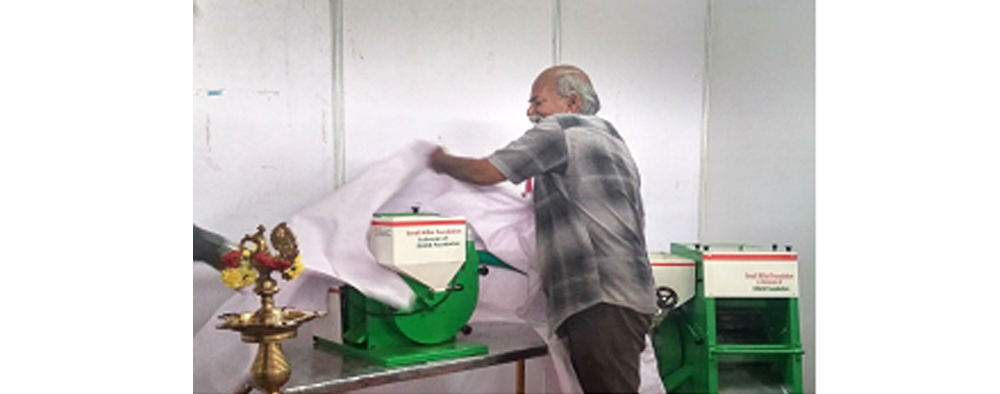
The workshop ended with concluding remarks by Mr. M. Karthikeyan and vote of thanks by Mr. P. Saravanan
Important deliberations of the workshop
Opening remarks
Mr. M.P. Vasimalai, Executive Director of DHAN Foundation, shared the need for holistic approach to address the drudgery of women in small millet processing. While he appreciated the various initiatives for developing small millet processing equipment, he emphasized the need for testing the equipment in 20-25 different production regions to generate necessary feedback. He remarked that developing appropriate processing equipment for small millets is a long term process and need continuous efforts by the relevant agencies.
Challenges in primary processing of small millets

Dr. Dwijendra Nath Guru, an expert on small millets, explained the social construct behind drudgery of women in small millet processing and observed that it is a reflection of entrenched gender inequality prevalent across the rural and tribal communities. He broadened the objectives of processing of small millets by including the animal feed component along with human food component. He shared the challenges in processing of small millets in terms of i) Machine/tools, ii) Shelf life and iii) Process. He shared the critical aspects in machine design related to grader, destoner and huller, the main equipment in the small millet processing assembly. He emphasized the critical aspects in operations and the need for systematic training of operators. He also shared the critical aspects to be given attention in the ‘producer’ and ‘consumer’ sides for moving forward in addressing the technology challenges in small millet primary processing. More on his presentation can be seen at https://www.dhan.org/smallmilletfoundation/document/Challenges-in-Primary-Processing-of-Small-Millets.pdf
Recently developed technologies for primary processing of small millets
By Small Millet Foundation (SMF)
Small millet portable huller (SMF V2):

It is an enterprise scale huller with a capacity of 200 to 400 kg per hour. It has the following advantages over the prevailing hullers: i) can process all small millets with husk, ii) capacity to hull smaller quantities (even 2 kg), iii) run on household single-phase electricity with one hp power, iv) less weight and footprint, v) plug-and-play type, vi) require less maintenance and vii) easy to operate by women in terms of height, portability and inbuilt safety features. This model has been supplied to 10 agencies in four states with positive feedback. Mr. Janakan Rajan, the first adopter of SMF V series huller, endorsed the technology
Small millet Table-top huller (SMF V3):
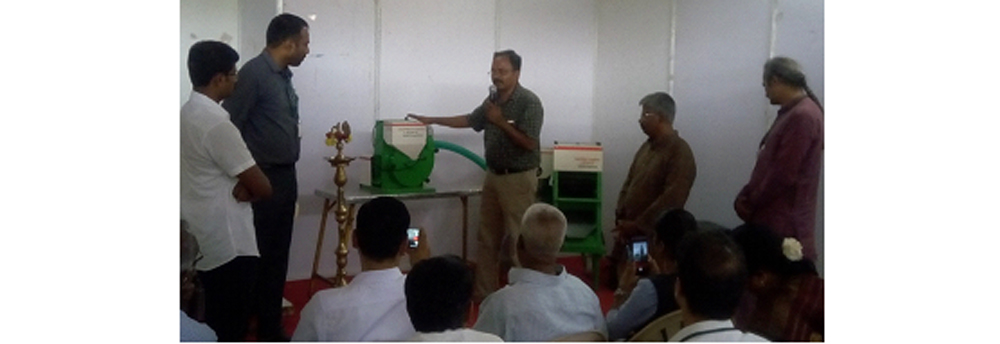
It has a capacity of 30 to 80 kg per hour and its salient features are, i) less weight (less than 50 kg), ii) less space requirement, iii) portable, iv) low noise, v) run on household power supply with 0.5 hp induction motor, and vi) can hull 0.25 kg or even lesser. It is suitable for milling at village level by women SHGs, FPOs and for milling less quantities by agencies like small scale entrepreneurs, millet research institutions, etc.
By Borne Technologies Pvt. Ltd.
Small millet processing assembly of varied scales:
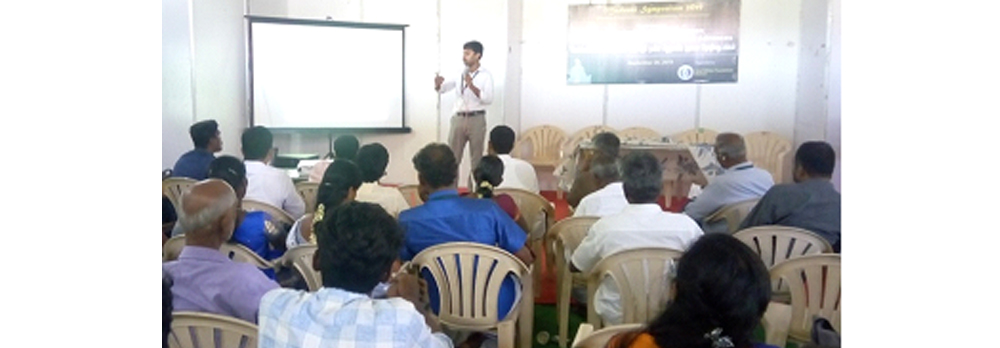
Small millet automated processing assembly with capacity starting from 100 to 5000 kg per hour. The assembly has six components including, polisher, fine separator and gravity separator. Only two persons needed to operate the assembly.
By Perfura Technologies India Pvt. Ltd.
CIAE huller, TNAU double chamber impact huller & aspirator-cum-destoner-cum-grader:
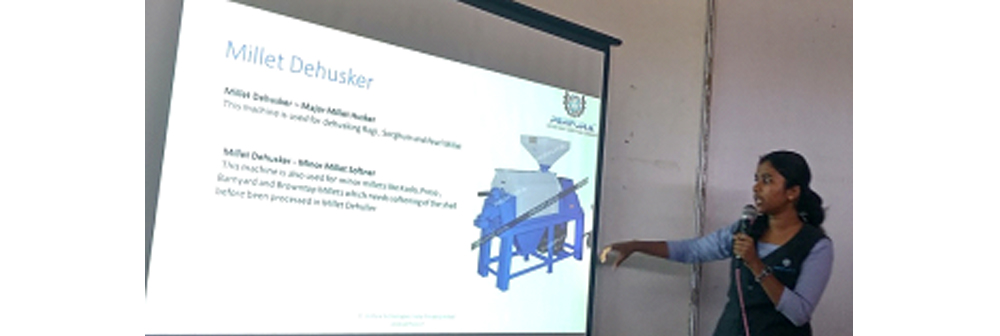
The double chamber impact huller technology received from TNAU was improved in terms of increasing the capacity of hulling chamber and increasing the motor power from 5 to 7.5 hp.
By Vishra Agro Sales
Small millet processing technologies of varied scales:
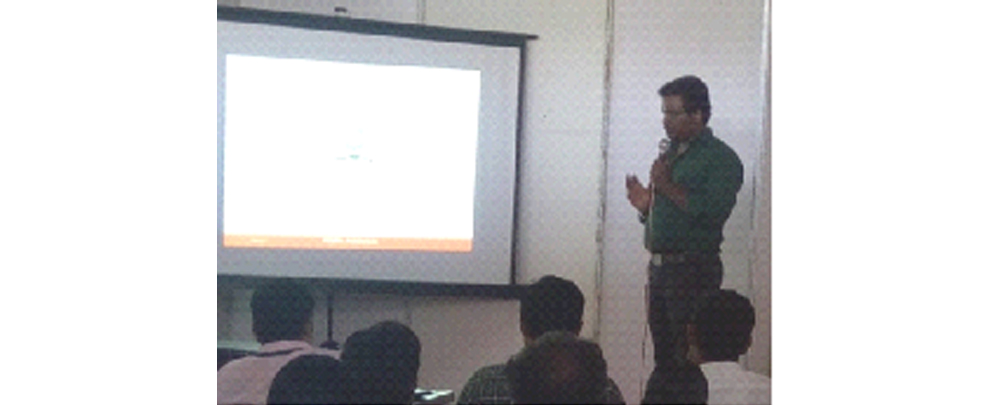
Customized small millet processing assembly with small to medium scale hullers (200 to 2000 kg) and the corresponding grader, destoner and elevator. Works in collaboration with Otake. Has supplied to 25 agencies across the country with positive feedback.
By Millet Machines and Tools LLP
Multi-deck portable grader:
Developed for pre-cleaning at the production level.The advantages of this grader are, i) energy efficient, ii) provisions to remove clogged grains, iii) ability to grade multiple millets and other grains through interchangeability of sieves, which enhances its utility at the village level, and iv) portable.
Other developments:
Mr. Janakan Rajan informed that gravity separators from DYNA Tech & Agrosaw can be improvised for small millets and they may aid in separation of grains from hulled rice and segregation of hulled rice into different grades.
Areas for further research
Mrs. Salome Yesudas, a food scientist, suggested designing processing equipment of millets in such a way that they can run on alternative energy like solar-battery or diesel, as electricity supply is still a problem in many remote millet growing regions like North Eastern states.
Mr. Sivakumar, a millet food entrepreneur, suggested development of solar dryer for drying small millet grains to get optimum moisture content before processing and simple equipment for parboiling of small millets. He also suggested development of easy techniques to identify kodo millet poisoning, so that poisoned grain lot can be destroyed.
Mr. Dandapani, an experienced millet processor, suggested standardization of sieve size specifications for different small millets
Dr. Dwijendra Nath Guru, an expert on small millets, suggested developing easy methods to identify bran content in processed small millet rices by the consumers.
Concluding remarks:
Mr. M. Karthikeyan, Convener, expressed that this workshop could pool together some of the important recent advances in primary processing of small millets. He also shared that the equipment development for primary processing of small millets is a work-in-progress and appealed to the participants to share the new developments in this field for enhancing collective learning and advancement.